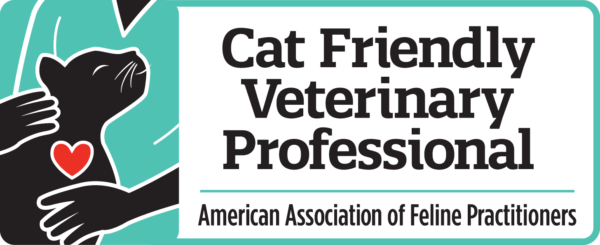- By having two or more cats you are able to enjoy the true social nature of cats as a species. They naturally live in small groups called colonies. Cats are solitary hunters, but not a solitary species.
- Cats that have a playmate tend to be more socially well adjusted. They also tend to have less behavior problems related to social skills such as: predatory aggression (biting of hands and other appendages), scratching, hissing, hiding and overall shyness.
- Only cats are typically poorly socialized and much more aggressive to most anyone in their life. We commonly refer to these cats as having “only child syndrome” or “Tarzan”; they do not know what to do with another cat when faced with it years later.
- Cats need mental stimulation throughout the day, just like humans. Studies have shown that animals that live alone have smaller brains than their streetwise counterparts.
- In Switzerland, an anti-cruelty law was passed that requires people that are adopting or buying a dog or cat to acquire two since it is the nature of the animal to have company of its own kind.
- Cats that have a playmate to keep them active will have less of a tendency to be overweight and suffer related health issues.
- Destructive behaviors due to boredom and attention seeking are less common when they have a buddy. This means less scratching on furniture, getting into cabinets, chewing on wires, etc.
- When you travel or are gone at work all day they will have each other for company. Cats take comfort in simply the presence of another feline, they do not have to sleep together and groom each other to enjoy knowing one another are there.
- It is more common for people to return an adopted cat due to behavior problems when only one was adopted versus two.
- Your cat will likely remain more youthful and playful well into their senior years with the benefit of a companion.
- The workload to care for two cats versus one is virtually the same. The benefit of not having to be the sole provider of entertainment also makes two even easier than one!
- You do not need to have more space to have a second cat.
- Because………Two is better than one! For the humans, for the cats and for the pet overpopulation crisis!

This is Willow and Soren as babies. It is always best to adopt two kittens together.
Healthier, Safer, More Responsible: Indoor Only Cats
Indoor only cats live longer, healthier lives and have less risk of disease, injury or getting lost or stolen. Should you decide to give your cat supervised access to the outdoors, we recommend using a leash and harness or outdoor enclosure and making sure your cat has proper identification in the form of a microchip and a collar and tag. All cats, especially those with access to the outdoors should also be on heartworm and flea prevention. The following is a list of risks facing free roaming cats and the families that love them.
Free roaming cats are often targets of human cruelty. Cats may be shot, stabbed, set on fire or captured and used as bait to train fighting dogs. Some cats are stolen for research and sold to laboratories.
Free roaming cats may be prone to being “rescued” by a Good Samaritan who may take your cat in as one of their own or take your cat to a local shelter, veterinary hospital or animal control agency.
Cats get hit by cars, and that kills cats every day.
When people attempt to avoid hitting cats while driving they may be injured or killed. Your free roaming cat can cause a person to die.
Allowing your cat to roam freely decreases the human animal bond. Why is it acceptable to let your cat outside to wander the neighborhood when you would not let your dog out for 12 hours to roam unsupervised?
Free roaming cats are susceptible to fighting with other free roaming animals resulting in transmission of diseases, abscess wounds, scratched eyes or internal injuries causing increased cost of medical care. Diseases they may encounter include rabies, cytauxzoonosis, feline leukemia and FIV. No vaccine is 100% effective.
Free roaming cats are vulnerable to attacks from predators including coyotes, foxes, birds of prey and, unfortunately, free roaming dogs.
Free roaming cats may have medical emergencies that are not seen by their owners, such as seizures, strokes or worse. Sometimes the cats recover and return home, but the family never knows what happened. You cannot seek treatment for a medical issue of which you are not aware.
Free roaming cats may encounter many toxic dangers including antifreeze, pesticides, rodenticides, fertilizers, traps or toxic plants.
Free roaming cats are more likely to contract debilitating parasites such as worms, ticks, mites and fleas. Zoonotic diseases (transmissible from animals to humans) such as roundworms and rabies may be spread by outdoor cats.
Poop and pee are important to see! What is or is not in your cats litterbox are important indicators of the health of your cat. For example, too much or too little urine can be indicative of an important and possibly life threatening medical issue.
In cold climates, cats may crawl under car hoods to warm up. When the ignition turns, the cats are mangled. Additionally, they may seek refuge in crawl spaces, sheds and garages where they may be easily locked in, without food or water, for extended periods of time.
Free roaming cats may not find their way back home, especially senior cats.
Allowing your cat to roam freely is not good for the environment. They do in fact kill songbirds, small mammals and other wildlife.
Allowing your cats to be unsupervised outside may cause your neighbors to think of you as disrespectful. Free roaming cats cause behavior problems for neighbors' indoor only cats; roaming cats may eliminate on someone else's property, often in gardens. They may also relieve themselves on or scratch the hoods of cars.
Indoor only cats live an average of three times longer than outdoor cats.
What is the upside of being encouraged to roam the neighborhood? Life is more interesting outdoors, but far more dangerous too. Nothing listed above is opinion - it is all fact. We know these are real threats to cats allowed to wander outside. We just don't know exactly how often they occur. We know most of these things can't happen to indoor cats. Please reference our Environmental Enrichment handout for ideas on keeping your cat active, stimulated and happy within the safety of your home.
How to Cut Pills Accurately and Efficiently.
In this short clip, I illustrate how to cut your cat’s medications into teeny tiny pieces easily, accurately and efficiently. Enjoy! Please also check out my other how-to videos on medicating to help you medicate your cat successfully and positively!
How To Train Your Cat To Accept An Asthma Inhaler
This video will help you acclimate your cat to an asthma inhaler and mask and teach you how to introduce it in a positive way. It is so important to start off correctly and not make the experience scary and negative. Take the time to do it right! You and your cat will be glad you did.
How to draw up an injection for your cat
In this clip I explain how to accurately read a syringe, draw out the measured amount of injectable medication, explain the difference between two commonly used syringes as well as emphasize sterile technique. For those who need to learn how to then give a subcutaneous injection to your cat please watch this video: https://www.fundamentallyfeline.com/how-to-give-a-subcutaneous-injection-to-cats/






